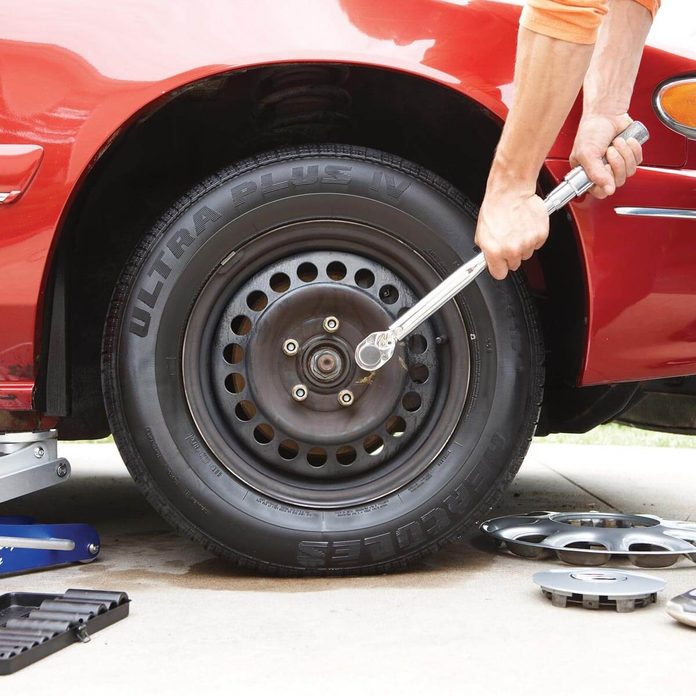57. Remove a Stubborn Oil Filter

We’ve all done it—overtightened an oil filter so much that it’s a bear to remove. If you think you can remove it by jamming a long screwdriver through the can and twisting, think again. The screwdriver will just rip the can open and you’ll be drenched in oil. When you’re done dealing with that mess, the filter will still be stuck and you’ll be even more frustrated. To remove a stuck filter, use a band-type wrench that you’ve lined with coarse-grit adhesive-backed sandpaper.
58. Change Your Engine Coolant

You can change your coolant yourself in about an hour. You’ll need to invest in an air-powered refilling tool to remove air pockets from the cooling system as you fill. You’ll save about $50 on your first coolant change and about $100 on each one after that. Check out how to change your engine coolant here.
59. Proper Way to Torque Lug Nuts

Did you know there’s a right way and a wrong way to tighten lug nuts? Most people think tighter is better. Not true. Overtightening lug nuts is the No. 1 cause of warped brake rotors (called “brake rotor lateral run-out”). Warped rotors cause pedal pulsation and can increase your stopping distance. Overtightening can also break wheel studs. The stud itself doesn’t cost much ($3), but the labor to press out the old stud and insert the new one can run $50 to $75.
Spin the lug nuts on by hand. Never coat the stud with grease, oil or anti-seize. Lower the jack only enough to bring the tire into contact with the road. Tighten each nut to half the specified torque. Then lower the vehicle completely and tighten each nut to full torque. Consult your owner’s manual or a shop manual and set your torque wrench to one-half the recommended torque specification. Reset the wrench and tighten each nut to full torque. Move the socket from one nut to the next in a star-shaped sequence.
Study this fix a flat survival guide to get you through a roadside emergency.
60. Save your back with a 20-in. extension bar

